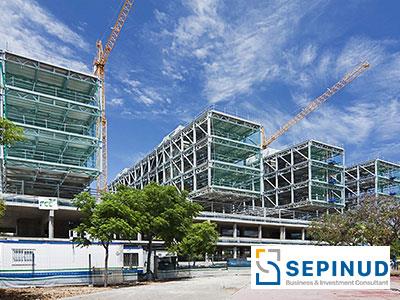Feasibility Study of Establishing Greenhouse Complex For Growing Plants, Vegetables and Flowers with aim of Export
Abstract:
In recent years, the large territory of dry and semi-arid climate of Iran and rainfall reduction
in the past decade have led the investors to invest in greenhouses.
The possibility to control climatic factors affecting plant growth such as humidity, light,
temperature and air ventilation in the greenhouses have made production rate 10 times greater
than cultivation in open space. In fact, what differentiates greenhouse crops from other
products is the principled and optimal use of energy sources.
In greenhouse cultivation, compared with other crops, irrigation efficiency is more than 90%
and soil can be modified and controlled. In such systems, water reaches the root of the plants
and bushes sufficiently, so it causes reduction of pests and diseases and increases the quality.
Greenhouse cultivation is one of the most commonly used methods for producing agricultural
products, regardless of bad weather restrictions. In addition, it also has investment potential
in both cold and tropical regions. Especially with the technology development and the
creation of new heating and cooling systems, the possibility to exploit greenhouse methods in
agricultural productions has increased. Also saving energy carriers is a futuristic solution
which has been adopted in several businesses around the world. Lack of water and heat
resources in agriculture has led to the formation of greenhouse trade, which produce highly
demanded products with less energy. This issue is more noticeable especially in the countries
facing water shortage crises.
Today, different products in greenhouses are reproduced in order to supply the demand out of
harvesting season. Cucumbers, tomatoes, peppers, strawberries, and a vast variety of
vegetables and fruit are among popular greenhouse crops. The production and supply of
greenhouse products provide a good opportunity for investors, to both economically benefit
and take effective steps in order to develop production and employment of the country. In
fact, greenhouses have been highly accepted by farmers as a brand new technology.
Aras Free Zone located close to Aras River and its fertile lands, is suitable for industrial
farming, creating large agro-industrial complexes with aim of export to the Caucasian
countries and capital city of Tabriz as a trade center and having industrial capacity consisting
of industries located in East of Azerbaijan for developing productions and market.
Meanwhile, the completion of shipping infrastructure creates a positive effect in developing
commercial and economic exchange with Caucasian countries.
Tourist attractions, mineral materials and huge water resources are the main natural resources
in the region. Besides, 20-year tax exemption on legal and real person’s income, free inflow
and outflow of capital, tax exemption on value added and unlimited money transfer rate have
made great potentials for investment and profitable economic activities.
Jolfa-Tabriz railway, that connects Aras Free Zone with independent countries and the
common wealth of independent states, Caucasian countries, Russia, Turkey, Black sea,
Europe, Persian Gulf and Oman in the South, is one of the most important railways in Iran
that has a great influence on development of the country. Moreover, Tabriz-Jolfa railway links Jolfa, Noordooz and Khoda Afarin with Nakhjavan, Armenia and Azerbaijan. Also Bazargan border road interlinks Bileh Savar to European and CIS countries.
In addition, construction of Aras Free Zone airport is on the planning stage due to the 120-km
distance between Tabriz international airport to Aras Free Zone and the 35-km distance from
Nakhjavan airport to Aras Free Zone.
Due to the investment in Goordian Desert (1800 acres), Arj Gulf (25100 acres), Khoda Afarin
(more than 70,000 acres) and greenhouses (350 acres) in the last decades, production capacity
of agro products in these regions is about 70,000 tons in a year. However, Aras Free Zone
enjoys multiple transportation (roads, railways, air) and Development plans that will provide
the tropical and subtropical products of the country to the north east countries especially
Russia and Europe.
The largest importers of Iran's greenhouse products are Iraq and Russia. Therefore, the
greenhouse establishment in Aras Free Zone can reduce shipping and transporting costs due
to its proximity to Russia.






.jpg)
.jpg)
.jpg)
